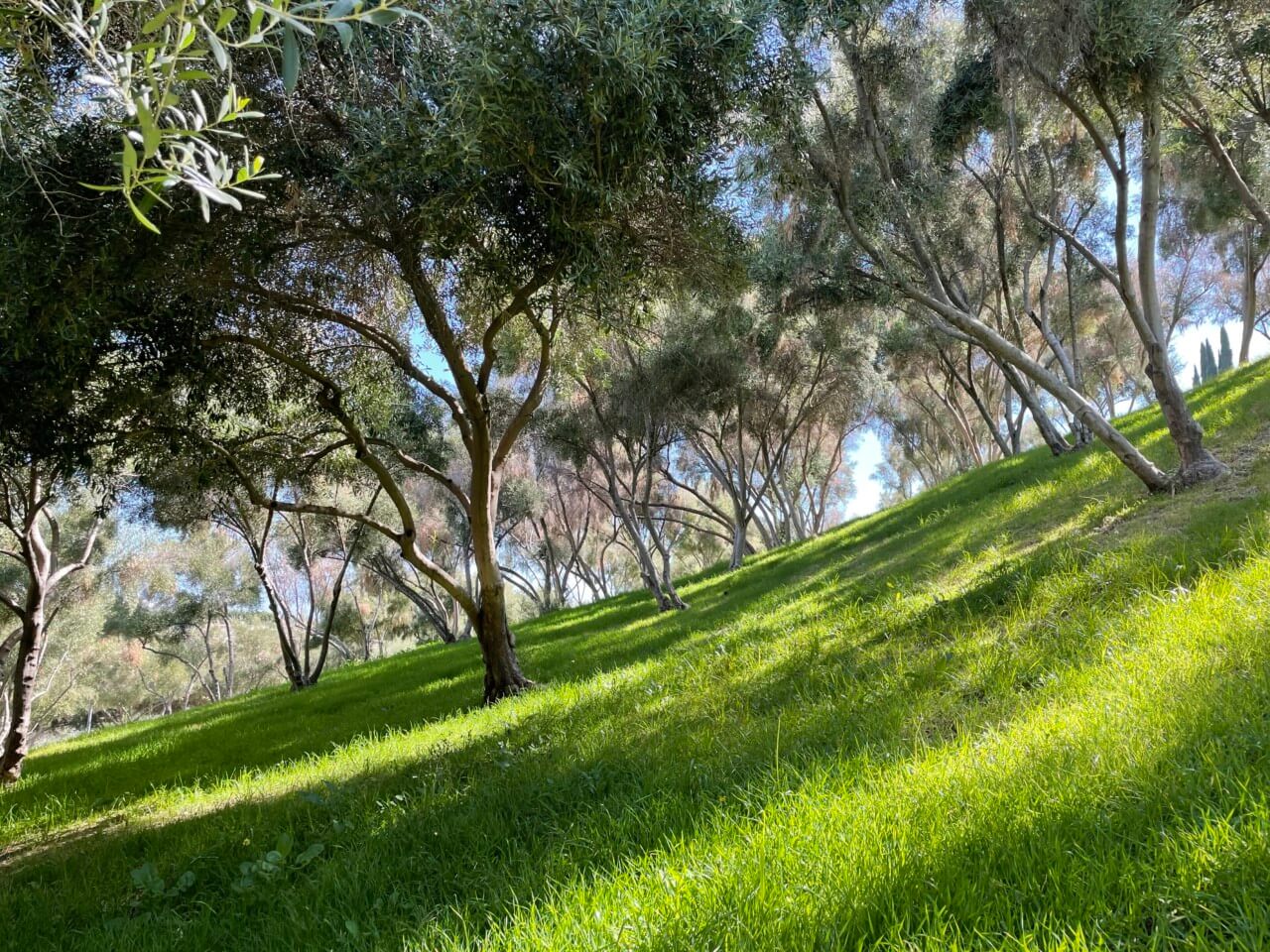Los Angeles’s Barnsdall Art Park, a hilltop city-park-slash-cultural-campus that rises above the intersection of Hollywood Boulevard and Vermont Avenue, is best known for its sweeping city views, arts education programming, and being home to the only UNESCO World Heritage Site in L.A: Frank Lloyd Wright’s Hollyhock House, which has never looked better as it celebrates its 100th birthday this year.
And then there are the olive trees. The 11.5-acre park, located at the crest of a topographical landmark that was once home to an early 20th-century commercial olive orchard known as Olive Hill, now holds 333 Olea europaea and could soon be home to many more thanks to a new horticultural initiative recently revealed by the City of Los Angeles, the Barnsdall Art Park Foundation, and the Los Angeles Parks Foundation.
In addition to developing a strategy for the planting of new olive trees to bolster L.A’s urban canopy, Barnsdall Art Park’s existing historic olive grove is currently undergoing a robust, Parks Foundation-led horticultural survey to help to determine a care plan for the future. The Barnsdall Olive Grove Initiative is made possible by a $25,000 donation to the city’s Adopt-a-Park program by the Barnsdall Art Park Foundation. The nonprofit is also actively raising funds that will be used to pay for the planting and maintenance of new olive trees at the park through the Los Angeles Park Forests program. While the exact number of new trees that will join the existing grove has yet to be determined, the goal is to make a modest contribution towards planting 90,000 new trees as part of L.A’s Green New Deal.
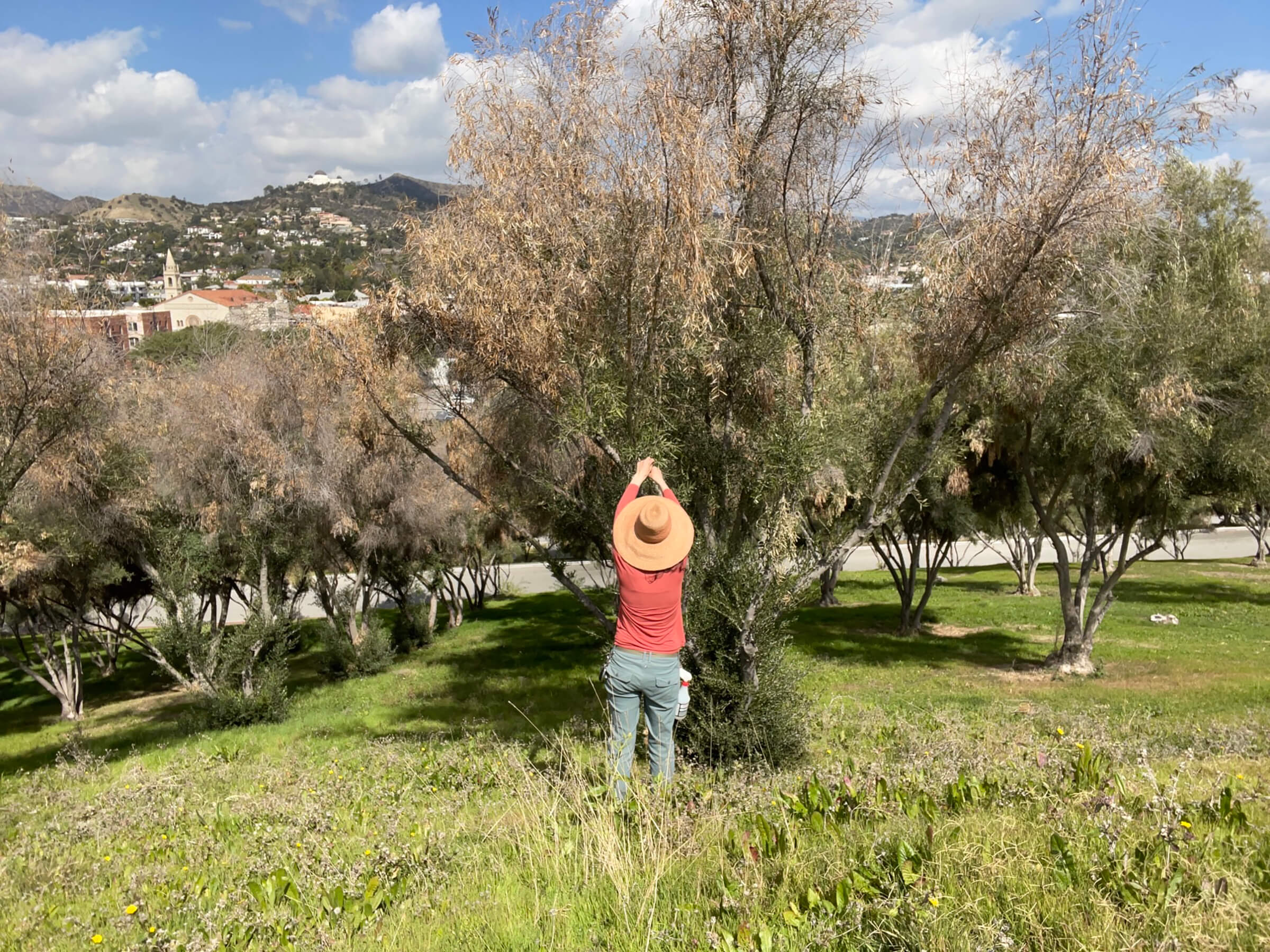
“Preserving the existing trees and propagating new, healthy olive trees into the campus’s landscape is an essential step in preserving this historically significant grove that is an essential contributor to this cultural resource we all cherish, Barnsdall Art Park, and UNESCO contributor, Hollyhock House,” said District 13 Councilmember Mitch O’Farrell in a statement.
Save for both architectural motifs and real specimens of a certain flower, olive trees are the defining botanical attribute of Barnsdall Art Park, a Los Angeles Historic-Cultural Monument that’s decidedly less an outdoor recreation-focused public green space and more a leafy cultural compound centered around the Hollyhock House. Also within the park are the Los Angeles Municipal Art Gallery, the 299-seat Barnsdall Gallery Theatre, and the Barnsdall Arts Center & Junior Arts Center.
The park was first established in 1927 when Aline Barnsdall, a Pennsylvania oil heiress (of the crude, not olive variety), art collector, and experimental theatre enthusiast, donated a swath of the former orchard to the City of Los Angeles so that it could be transformed into a public park and major regional destination for art and architecture.
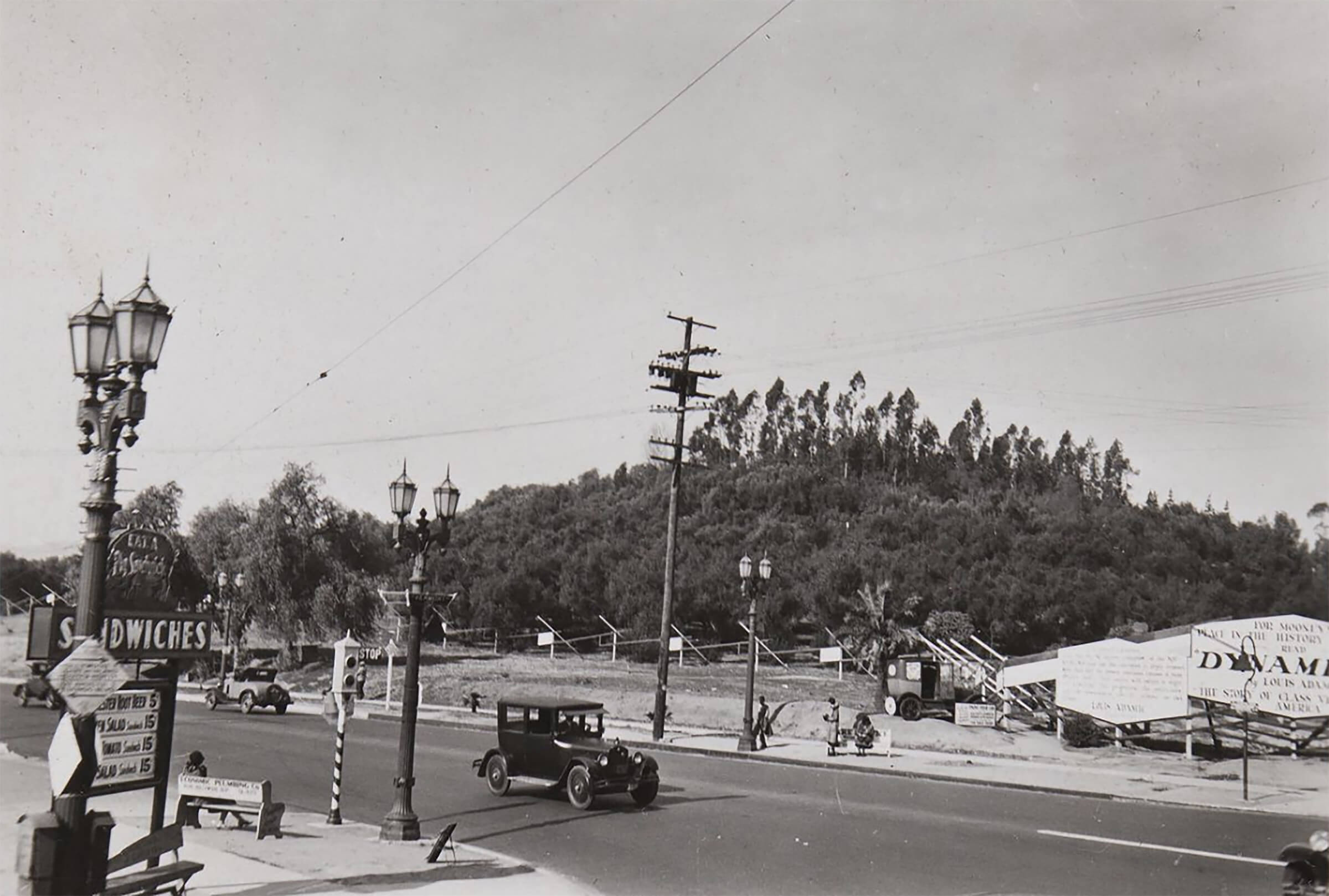
A little over a decade earlier, Barnsdall had purchased the expansive agricultural tract with plans to convert it into an estate doubling as a sort of avant-garde theatrical community with multiple buildings spread out across the property. In his first L.A. commission, Wright was tapped by Barnsdall to design the compound and private residence, the Hollyhock House. The name is a nod to Barnsdall’s favorite flower, which appears as an abstract motif throughout the interior and facade of the landmark Mayan Revival-style residence. During the construction phase, Wright was busy overseas tending to another commission, Tokyo’s Imperial Hotel, and his son, Lloyd Wright, along with a young Rudolph Schindler were tasked with overseeing the project in his absence.
While the commission yielded one of Wright’s masterworks, the larger plan for a community theater set amidst an olive orchard (preserved per Wright’s design) fizzled out. Wright, who clashed with Barnsdall, was eventually fired and Schindler, acting as project manager, was left to finish the home.
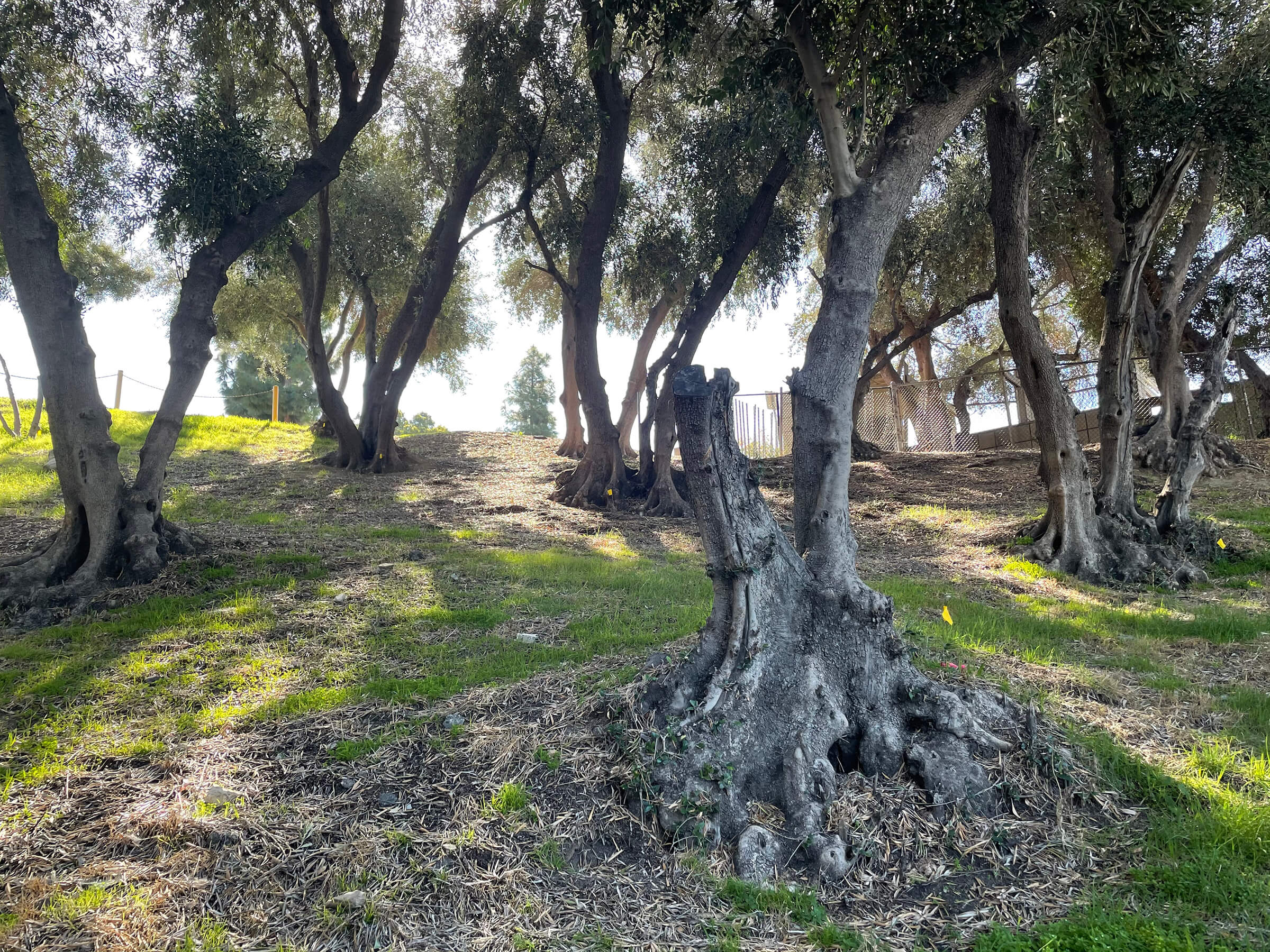
Just a few years later, Barnsdall donated the home and a portion of the surrounding land to the city. From 1927 through 1942, the Hollyhock House served as a clubhouse to the prestigious California Art Club as part of an agreement between Barnsdall and the city, although the rest of the property didn’t see much use. The 1950s and ’60s ushered in a period of considerable growth at Olive Hill, as modern theater and gallery facilities were constructed in close proximity to the Hollyhock House. The home itself has been subject to a number of conservation efforts over the decades, most notably the Project Restore initiative, which kicked off in 2005 and concluded with the reopening of the meticulously renovated structure to the public in 2015.
However, as Olive Hill evolved into a proper cultural campus in the years since coming into the possession of the city, its signature trees have become more scarce. As noted by the Barnsdall Art Park Foundation, only 90 olive trees remained at the park by 1992. However, hundreds more were planted in subsequent years as envisioned under the 1995 Barnsdall Park Master Plan, which was developed by Peter Walker William Johnson and Partners, Lehrer Architects, Levin & Associates Architects, and Kosmont Associates.
Today, some of the original olive trees that pre-date Barnsdall’s arrival in Los Angeles are still very much thriving at the park.
“During our soil analysis and assessment of the condition and health of the site, we discovered that 19 olive trees are likely from the original grove established in the 1890s,” explained Los Angeles Parks Foundation project manager and horticulturist, Katherine Pakradouni, in a statement. “Those fruiting trees have produced 58 seedlings that are growing near the older tree canopies. We are hopeful that those special seedlings may be nurtured into vibrant saplings at the Los Angeles Parks Foundation headquarters at the historic Commonwealth Nursery in Griffith Park and replanted at Barnsdall Art Park or other locations throughout the city.”
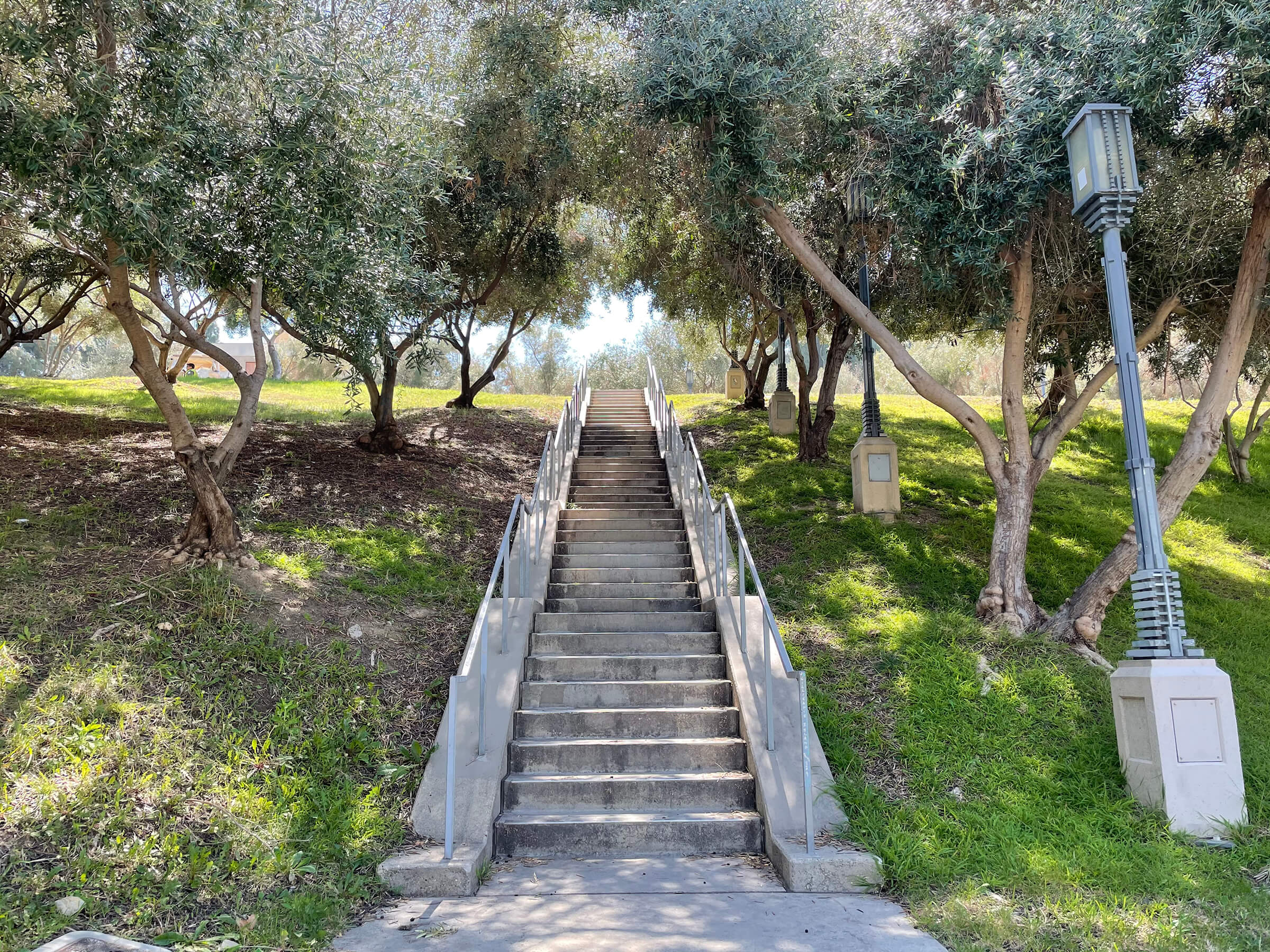
In addition to the launch of the Barnsdall Olive Grove Initiative, it’s an all-around monumental year for East Hollywood’s hilltop arts complex: the Hollyhock House is, as mentioned, celebrating its centennial. This year also marks the 50th anniversary of the completion of the Los Angeles Municipal Art Gallery and Gallery Theatre building and the 50th anniversary of Barnsdall Art Park’s inclusion on the National Register of Historic Places. A fundraising drive, the Barnsdall Art Park 100 | 50 | 50 Campaign, will help to “support the City of L.A.’s comprehensive efforts to conserve, enhance, and activate the park’s landscape, infrastructure, public programs, and exhibitions,” per a press statement.
“The Barnsdall Art Park Foundation is thrilled to celebrate the centennial of Hollyhock House and these incredible milestones throughout Barnsdall Art Park, one of the great gems in our city’s crown,” said Daniel Gerwin, president of the Barnsdall Art Park Foundation. “We are excited to work with the City and all our partners to honor Aline Barnsdall’s extraordinary vision. Because the park is virtually the only green space serving the local community, the Barnsdall Olive Grove Initiative is of vital importance both historically and socially.”









